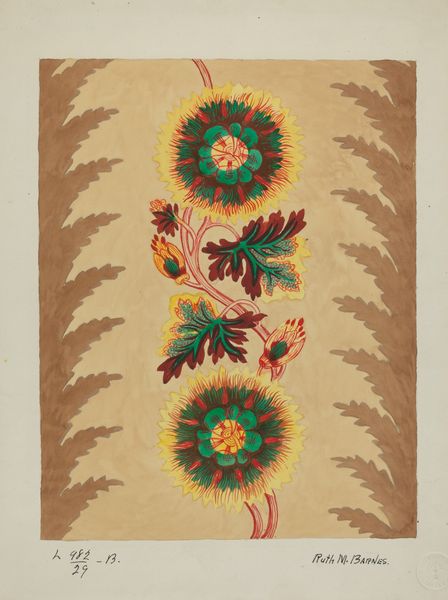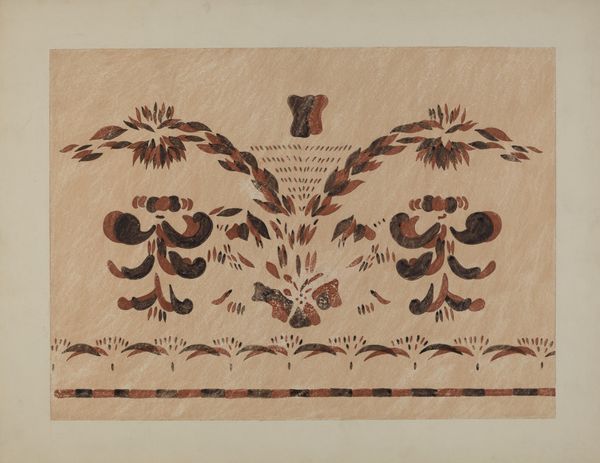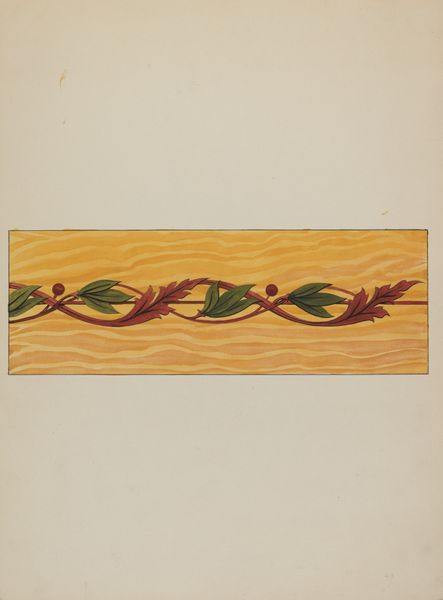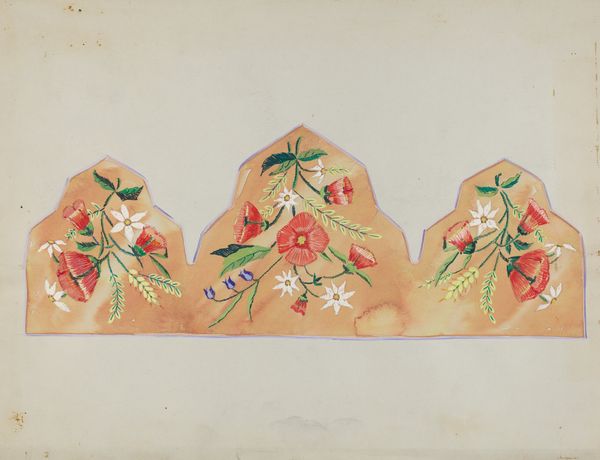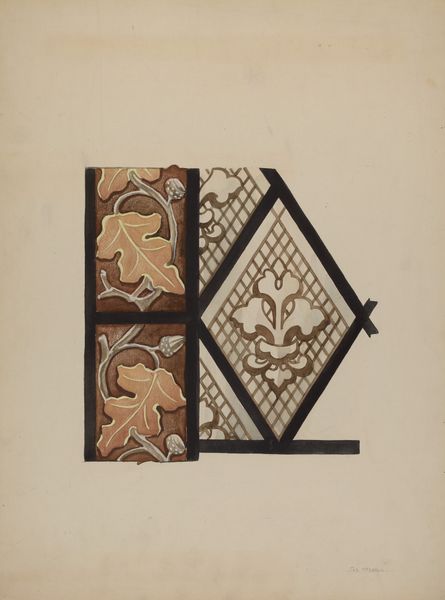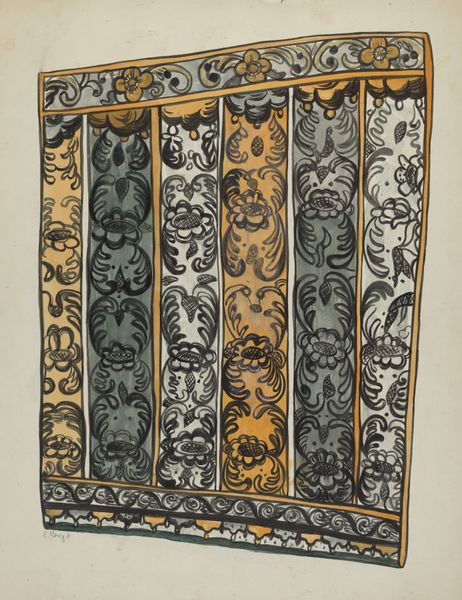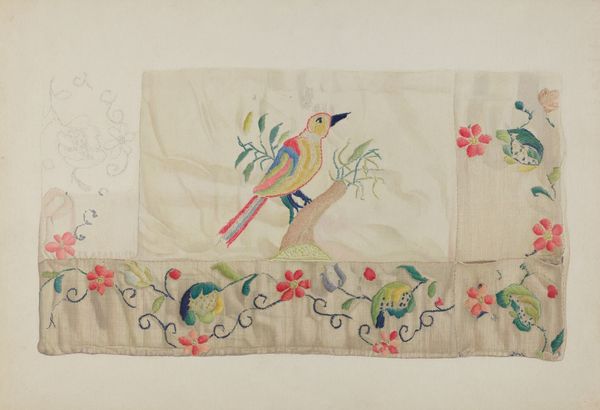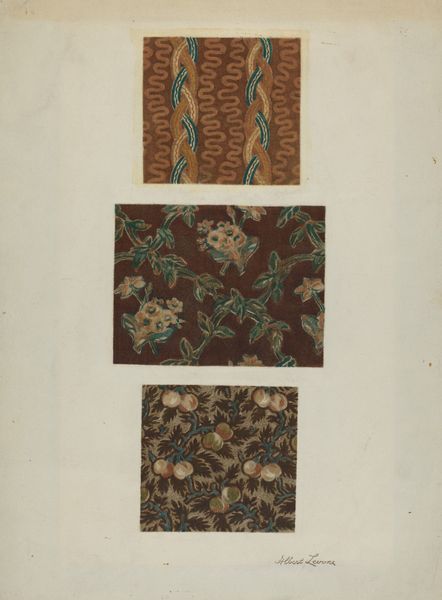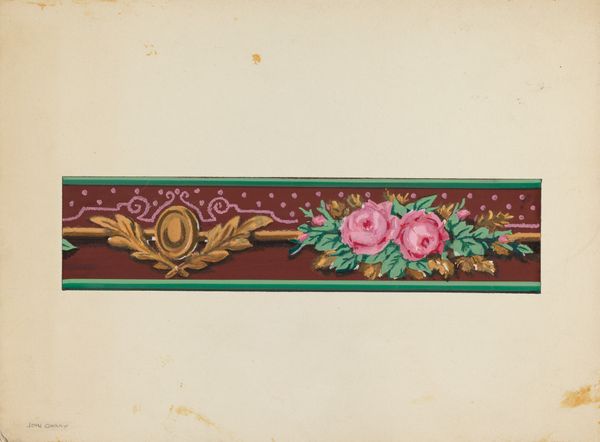
drawing, watercolor
#
drawing
#
landscape
#
watercolor
#
watercolor
Dimensions: overall: 26.7 x 31.8 cm (10 1/2 x 12 1/2 in.) Original IAD Object: 2 1/2" high; 10" long
Copyright: National Gallery of Art: CC0 1.0
Editor: So, this watercolor piece is called "Painted Glass" by James McLellan, dating from around 1937. It features three vertical panels of stylized foliage against a deep reddish-brown background. It’s quite striking, almost like a design for stained glass. What do you see in it? Curator: I see a fascinating negotiation of art, craft, and social function. McLellan’s choice of foliage as a motif points to several compelling avenues of exploration. Are these plants native to a specific locale? How might their presence within architectural structures alter or affect the space they inhabit? It encourages us to question how he's using images from nature to promote or undermine specific social ideas and hierarchies. Editor: That's interesting. I hadn't considered that the foliage might represent specific ideologies. Curator: Consider also the historical context. 1937 falls squarely within the era of the New Deal. Did McLellan work under the WPA, or Federal Art Project? This informs our understanding. The rendering of the design itself prompts consideration of power dynamics. Is this McLellan's idea of the ideal natural landscape, or is he challenging traditional ways of representing the relationship between nature and humanity? Editor: I see what you mean. The way the panels are isolated might suggest division. Curator: Exactly! The linear and isolated aspect might be challenging certain historical concepts of community that depended on that relation. How do you perceive McLellan’s commentary here? Editor: I’m starting to think it’s less decorative and more about making us think about how we relate to the natural world and to each other. It gives the design an almost unsettling quality. Curator: Precisely. Art isn’t always meant to comfort us; sometimes it’s a call to engage, to critique, and ultimately, to dismantle preconceived notions. I have a lot to ponder regarding decorative art in the pre-war context. Editor: I agree, this makes me want to dive into this time period! Thanks for sharing these insights!
Comments
No comments
Be the first to comment and join the conversation on the ultimate creative platform.
